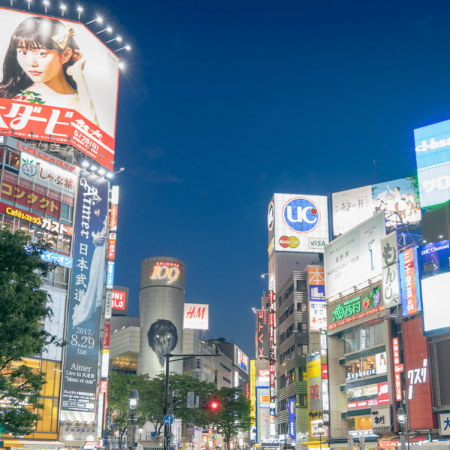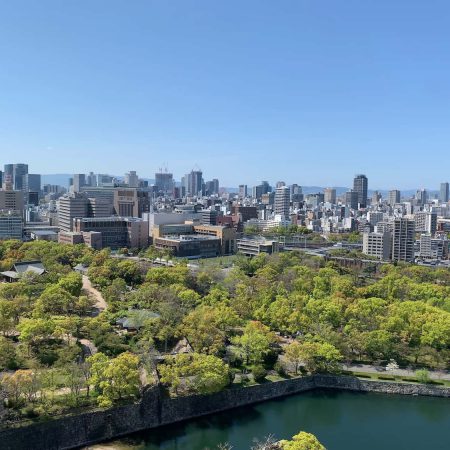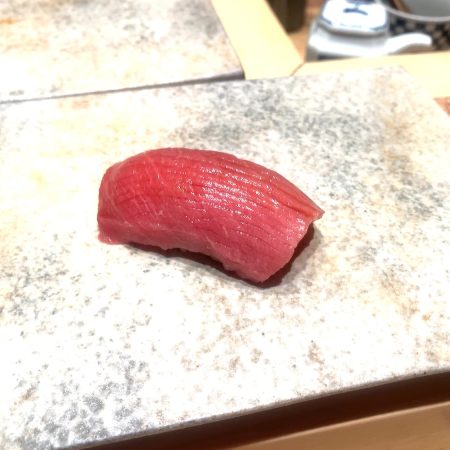Explore Tokyo’s captivating history and modern charm at the iconic Tokyo Station, a masterpiece by Kingo Tatsuno in 1914, nestled in the vibrant Chiyoda Ward. Adjacent to the Imperial Palace Grounds in the Marunochi business district, this railway hub symbolizes architectural magnificence.
A testament to resilience, the eastern extension emerged after the 1923 Tokyo earthquake, creating a colossal complex with Marunouchi to the west and Yaesu to the east, housing a vibrant mix of shops and entertainment venues.
The 2013 restoration revived the dome and exterior, inviting exploration of the enchanting dome interior adorned with flower decorations and Chinese zodiac reliefs. The North Dome hosts the Tokyo Station Gallery, showcasing five annual exhibitions of modern art.
Wander the historical Marunochi side, echoing the elegance of the Meiji era. Marunouchi, a commercial hub and historical gem, borders Tokyo Station and the Imperial Palace, transporting you to the Edo period’s thriving business center.
Yanosuke Iwasaki’s vision in the Meiji period shaped Marunochi into Japan’s first modern business district. Stroll Marunouchi Naka Dori Street, a tree-lined avenue adorned with outdoor art, boutiques, and cafes, creating a meticulously curated cityscape.
Nearby, the Imperial Palace on the original Edo Castle grounds, a regal touch to Tokyo’s landscape since 1457, served as the Tokugawa shoguns’ power seat from 1603 to 1867. Post-Meiji Restoration, it became the Imperial Family’s residence, with the Tokyo Imperial Palace emerging in 1888 from the original castle’s ashes.
Though few original castle buildings remain, formidable stone walls scattered throughout poignantly remind us of its grandeur. Tokyo Station and the Imperial Palace weave a captivating narrative, seamlessly blending history, culture, and modernity, inviting visitors on a mesmerizing journey through time.
Marunouchi Ekimae Square (東京駅丸の内駅前広場)
Marunouchi Ekimae Square in Tokyo, completed in 2017, enhances the historic Tokyo Station’s elegance. Divided into three areas, it includes the tranquil Marunouchi Central Square, bustling Transportation Square, and charming Marunouchi Brick Square. The square harmoniously blends tradition and modernity, offering a picturesque environment with diverse functions, including a shopping and dining complex. Accessible by various train lines, it serves as a gateway to Tokyo’s landmarks like the Imperial Palace and Ginza, making it a popular destination for locals and tourists alike.
Kokyo Gaien National Garden (皇居外苑)
Kokyo Gaien National Garden, spanning 1.15 million square meters in Tokyo, is a masterpiece blending history, culture, and natural beauty. It includes the Imperial Palace Plaza, Kitanomaru District, and 12 moats. Highlights include the iconic Nijubashi Bridge, a statue of Kusunoki Masashige, and Wadakura Fountain Park. With a history dating back to the 15th century, the garden features well-preserved historic structures. Modern attractions like the fountain park offer a serene escape. Free to the public, the garden provides a perfect mix of tradition and modernity, easily accessible by public transport. Don’t miss this hidden gem for a dose of Japanese culture, history, and nature.
The East Gardens of the Imperial Palace (皇居東御苑)
The East Gardens of the Imperial Palace, situated a 5-minute walk from Otemachi and Takebashi subway stations, span 210,000 square meters. Accessible through three gates, the gardens feature the Sannomaru Shozokan museum showcasing imperial collections. Highlights include the Ninomaru Garden with Yama-boshi dogwood trees, guardhouses like Doshin-bansho and Hyakunin-bansho, and historical sites like the Remains of Edo Castle, O-oku women’s quarters, Oku Corridor, and Tenshu-dai. Visitors can climb Tenshu-dai for panoramic views and appreciate the Fujimi-yagura from a closer distance.
Ote-mon Gate (大手門)
The Otemon Gate, a significant entrance to the old Edo Castle, is a remarkable structure with a square-shaped turret and an earth-paved bridge. Designed for heavy security, it leads to a “masugata” gathering area with defensive features. Serving as the primary gateway for daimyos during ceremonies, the gate symbolizes the grandeur of Edo Castle. Despite historical events and fires, the present-day Otemon Gate at the Tokyo Imperial Palace remains resilient since its reconstruction in 1967. A witness to history, it’s an Important Cultural Property of Japan, offering visitors a glimpse into Japan’s past and cultural heritage. Accessible by train or bus, admission is free, and it’s a popular destination for tourists exploring Edo Castle’s ruins and the East Imperial Gardens.
Nijubashi Bridge (二重橋)
The Nijubashi Bridge, near Tokyo Metro Sakuradamon, Hibiya, and Nijubashi stations, spans the Imperial Palace moat. Officially referring to the iron Seimon-tetsubashi Bridge, it dates back to the Edo Period, originally constructed as a wooden bridge named “Nishinomaru Gejobashi.” Rebuilt in 1888 as an iron bridge, it adopted its current appearance in 1964 with advanced anti-rust technologies. Though not regularly open to the public, it symbolizes Japan, featuring graceful architecture and providing picturesque views of the palace grounds. The bridges hold cultural significance, representing the imperial institution’s continuity and modernization. Visitors can view them from Koyo Gaien after a short walk from Otemachi Station or Nijubashimae Station, or join guided tours of the Imperial Palace.
Chidori-ga-fuchi Moat (千鳥ヶ淵)
Chidori-ga-fuchi Green Way, a serene 700-meter promenade in Tokyo, offers a historical escape along the Chidori-ga-fuchi Moat, originally built for Edo Castle’s water reserves. Spring brings the magic of cherry blossoms, transforming the area into a pink paradise. Boat rentals, available from March to November, provide a unique experience amidst blooming cherry trees. Don’t miss the Chiyoda Sakura Festival, illuminating the blossoms at night. The moat, once part of Edo Castle’s defense, holds historical significance and serves as a peaceful retreat. Easily accessible by train or bus, it’s open year-round, with boat rentals during the specified season.
Chidori-ga-fuchi Park (千鳥ヶ淵公園)
Chidori-ga-fuchi Park, located near Kudanshita Station in Tokyo, offers a breathtaking cherry blossom viewing experience with a 700-meter-long path surrounded by 170 cherry blossom trees. The park’s unique charm includes benches for a forest bath, complemented by yellow rapeseed flowers from February to May. Adjacent Kitanomaru Park provides historical insights with 230 cherry trees. The park’s name, meaning “plover moat,” reflects its historical connection to Edo Castle. Whether a nature lover or history buff, Chidori-ga-fuchi Park is a must-visit, especially during cherry blossom season, offering a festive and romantic atmosphere. Boat rentals provide a serene view of this green space along the Imperial Palace moat. Easily accessible by train, it’s an ideal destination in Tokyo.
Yasukuni Shrine (靖国神社)
The Yasukuni Shrine in Tokyo is a Shinto shrine and war memorial founded in 1869 by Emperor Meiji. It commemorates over 2.5 million individuals, including soldiers, workers, and animals, who supported Japan in various conflicts. Despite controversy over its association with past militarism, the shrine provides an opportunity to learn about Japan’s complex history and pay respects to those who sacrificed for the country. Enshrining not only human souls but also animals and war-related objects, the shrine features a museum displaying over 100,000 war-related items. The surrounding gardens offer a peaceful environment for reflection on the shrine’s significance. Despite controversy, the Yasukuni Shrine remains a significant cultural site reflecting Japan’s history and complexities surrounding war responsibility and reconciliation.
Wadakura Fountain Park (和田倉噴水公園)
Wadakura Fountain Park, situated in the Wadakura section of Kokyo Gaien National Garden, features a stunning 8.5-meter fountain, a 30-meter artificial waterfall, and historic Edo-period structures. Constructed to commemorate imperial marriages, the park embodies Japanese culture, emphasizing nature and harmony. Its minimalist design with concrete, water, and light creates a serene ambiance, symbolized by a chrysanthemum-shaped fountain. Submerged LED lights enhance day and night views, with seasonal attractions like cherry blossom viewing and autumn foliage. The park hosts an illumination event from late November to late December, offering a cultural and natural retreat in the heart of Tokyo.
Hibiya Park (日比谷公園)
Hibiya Park, established in 1903, is a lush 40-acre green space in the heart of Tokyo, offering a glimpse into Japanese culture and history. Formerly a military training ground and feudal lords’ dwelling, it features a rose garden, two Western-style flower gardens, and a pond surrounded by cherry blossoms and ginkgo trees. The park includes the Gothic-style Shisei Kaikan building, the 500-year-old Risky Ginkgo tree, and the Hibiya Open-Air Concert Hall. A hub for sightseeing and events, it attracts both locals and tourists with its diverse offerings, accessible by Tokyo Metro or Toei Mita Line. Admission is usually free.
Kitanomaru National Garden (北の丸公園)
Kitanomaru National Garden, a 200,000 square meter oasis near Tokyo’s bustling city, offers a tranquil escape with evergreen forests, diverse trees, and over 200 cherry trees. Momijiyama Hill showcases vibrant maple trees in autumn. With a historical background dating back to the Tokugawa shogunate era and connections to Edo Castle, the park features preserved gates, sections of the moat, and cultural sites like Nippon Budokan and National Museum of Modern Art, Tokyo. Popular for cherry blossom viewing in spring and autumn foliage, it is easily accessible from Kudanshita Station, making it an ideal retreat for history enthusiasts, nature lovers, and culture enthusiasts alike.













